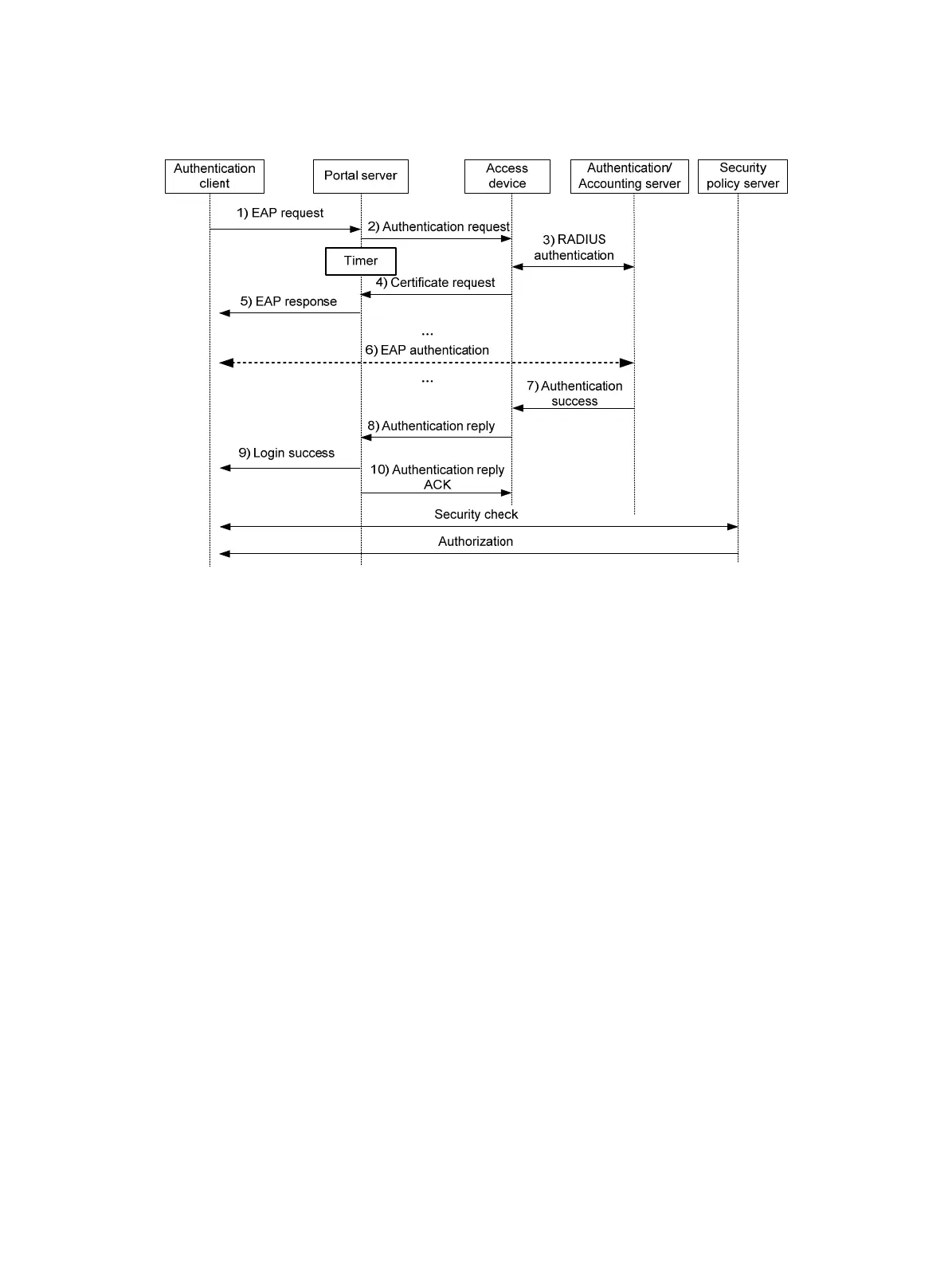289
Portal support for EAP authentication process
Figure 92 Portal support for EAP authentication process
All portal authentication modes share the same EAP authentication steps. The following example
uses direct portal authentication to show the EAP authentication process:
1. The authentication client sends an EAP Request/Identity message to the portal server to initiate
an EAP authentication process.
2. The portal server sends a portal authentication request to the access device, and starts a timer
to wait for the portal authentication reply. The portal authentication request contains several
EAP-Message attributes, which are used to encapsulate the EAP packet sent from the
authentication client and carry the certificate information of the client.
3. After the access device receives the portal authentication request, it constructs a RADIUS
authentication request and sends it to the RADIUS server. The EAP-Message attributes in the
RADIUS authentication request are those carried in the received portal authentication request.
4. The access device sends a certificate request to the portal server according to the reply
received from the RADIUS server. The certificate request also contains several EAP-Message
attributes, which are used to transfer the certificate information of the RADIUS server. The
EAP-Message attributes in the certificate request are those carried in the RADIUS
authentication reply.
5. After receiving the certificate request, the portal server sends an EAP authentication reply to
the authentication client, carrying the EAP-Message attribute values.
6. The authentication client sends another EAP request to continue the EAP authentication with
the RADIUS server, during which there might be several portal authentication requests. The
subsequent authentication processes are the same as that initiated by the first EAP request,
except that the EAP request types vary with the EAP authentication phases.
7. After the authentication client passes the EAP authentication, the RADIUS server sends an
authentication reply to the access device. This reply carries the EAP-Success message in the
EAP-Message attribute.
8. The access device sends an authentication reply to the portal server. This reply carries the
EAP-Success message in the EAP-Message attribute.
9. The portal server notifies the authentication client of the authentication success.

